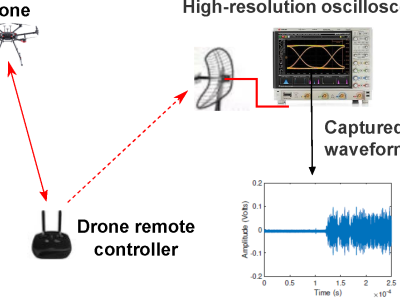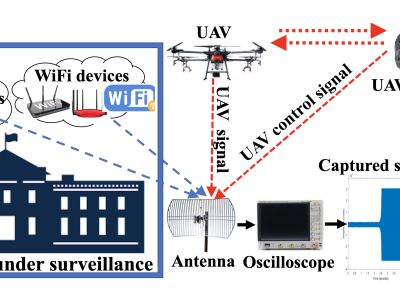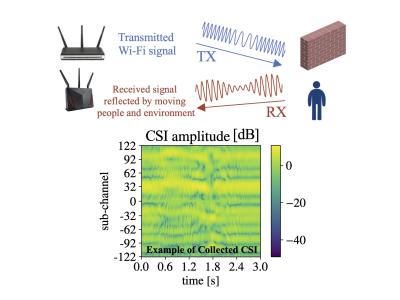Experimental Machine Learning Approach for Optical Turbulence and FSO Outage Performance Modeling

- Citation Author(s):
-
Antonios Lionis (University of Peloponnese, Department of Informatics and Telecommunications)Andreas Tsigkopoulos (Division of Combat Systems, Naval Operations, Sea Sciences, Navigation, Electronics & Telecommunications Sector of the Hellenic Naval Academy)Antonios Sklavounos (Division of Combat Systems, Naval Operations, Sea Sciences, Navigation, Electronics & Telecommunications Sector of the Hellenic Naval Academy)Argyris Stasinakis (Section of Electronic Physics and Systems, Department of Physics, National and Kapodistrian University of Athens)Hector Nistazakis (Section of Electronic Physics and Systems, Department of Physics, National and Kapodistrian University of Athens)Keith Kohn (Physics Department of the Naval Postgraduate School, California, USA)Konstantinos Aidinis (Department of Electrical and Computer Engineering and Centre of Medical, Ajman University, Ajman, United Arab Emirates)
- Submitted by:
- Kostas Peppas
- Last updated:
- DOI:
- 10.21227/8bqw-gy72
 599 views
599 views
- Categories:
- Keywords:
Abstract
A laser beam propagating in the free space suffers numerous degradation effects. In the context of free space optical communications (FSOCs), this results in reduced link’s availability. This study provides a comprehensive comparison between six machine learning (ML) regression algorithms for modeling the refractive index structure parameter Cn^2. A single neural network (ANN), a random forest (RF), a decision tree (DT), a gradient boosting regressor (GBR), a k-nearest neighbors (KNN) and a deep neural network (DNN) model are applied to estimate Cn^2from experimentally measured macroscopic meteorological parameters obtained from several devices installed at the Naval Postgraduate School (NPS) campus over a period of 11 months. The data set was divided into four quarters and the performance of each algorithm in every quarter was determined based on the R2 and the RMSE metric. The second part of the study investigated the influence of atmospheric turbulence in the availability of a notional FSOC link, by calculating the outage probability (Pout) assuming a gamma gamma (GG) modeled turbulent channel. A threshold value of 99% availability was assumed for the link to be functional. A DNN classification algorithm was then developed to model the link status (On-Off) based on the previously mentioned meteorological parameters
Instructions:
Please rename files data1.zip, data2.zip, data13.zip, data4.zip, data5.zip, data6.zip, data7.zip, data8.zip as
data.zip.001, data.zip.002, data.zip.003, data.zip.004, data.zip.005, data.zip.006, data.zip.007 and data.zip.008, respectively and extract them.
You will find four excel files, namely Sklavounos and Cohn, Autumn. 2022.xlsx Sklavounos and Cohn, Spring 2022.xlsx, Sklavounos and Cohn, Summer. 2022.xlsx and Sklavounos and Cohn, Winter. 2022.xlsx
Dataset Files
- data1.zip (Size: 10 MB)
- data2.zip (Size: 10 MB)
- data3.zip (Size: 10 MB)
- data4.zip (Size: 10 MB)
- data5.zip (Size: 10 MB)
- data6.zip (Size: 10 MB)
- data7.zip (Size: 10 MB)
- data8.zip (Size: 6.19 MB)
- Sklavounos and Cohn, Autumn. 2022.xlsx (Size: 16.52 MB)
- Sklavounos and Cohn, Spring. 2022.xlsx (Size: 24.83 MB)
- Sklavounos and Cohn, Summer. 2022.xlsx (Size: 17.92 MB)
- Sklavounos and Cohn, Winter. 2022.xlsx (Size: 18.4 MB)








We have uploaded the 4 Excel files for easier download.
- IEEE DataPort Admin
In reply to We have uploaded the 4 Excel by Susanta Behera
Thanks Alexander for sharing the data in excel format. Would you be able to explain each column in the dataset?
In reply to Thanks Alexander for sharing by SHENSON JOSEPH
The IEEE DataPort platform enables authors to share their datasets and applicable metadata. As a platform administrator, I do not have detailed knowledge or insight into the specifics of each dataset and therefore cannot provide the requested explanation.
Would you be able to share full paper as we are not able to download.
In reply to Would you be able to share by SHENSON JOSEPH
It appears that the related paper can be found here: https://www.mdpi.com/2079-9292/12/3/506